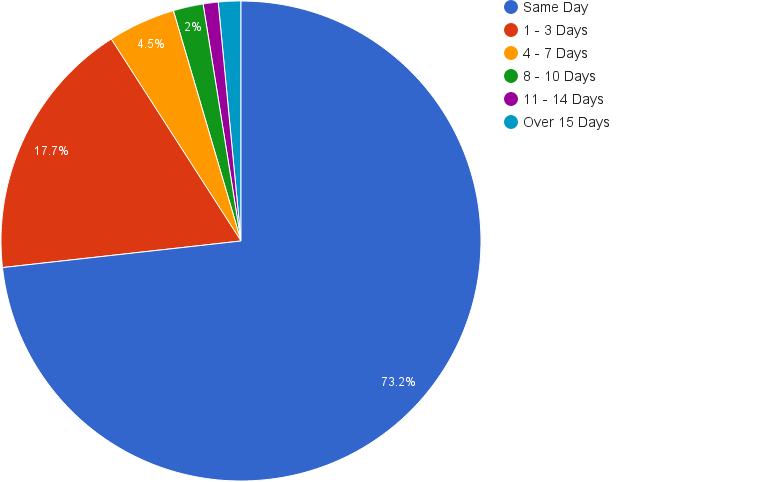Your Start Up's free trial is too damn long!
How long is your SaaS Start Up’s free trial? 14 days? 30 days? 60 days? Well what ever it is, the chances are it’s too long. You’re not alone though, as until recently, BugMuncher’s free trial was too damn longtm as well. I’d always offered a free trial of 30 days, for no reason other than that’s what lots of other start ups were offering. Having given it some thought, and done some analysis, it turned out 30 days was about 27 more than most people needed. As a result, BugMuncher now offers a much saner 10 day free trial.
How long should a free trial be?
An excellent question, and much like ”Should you require a Credit Card for a Free Trial?”, it’s a question that has been debated since the dawn of the Software as a Service business model. Unfortunately, unlike ”should you require a credit card for a free trial?”, there is no one size fits all answer to this one, it depends entirely on your service and users. Thankfully it’s very easy to figure out your free trial length sweet spot, and this blog post will tell you how.
Step 1 - Identify your “User Gets It” point
By “User Gets It” point, I simply mean the point at which a user has done enough to know whether your Start Up will work for them.
For BugMuncher it’s when a user has created an installation profile and submitted their first feedback report. For Twitter it might be when a user has followed some accounts and sent a tweet. GitHub would probably use first commit.
Decided what your is? Excellent, on to step 2.
Step 2 - Calculate time between sign up and “User Gets It”
For this I queried BugMuncher’s database to extract the time in days between the account being created, and the first feedback report being sent. As you can’t submit a feedback report with out first creating an installation profile, there was no need to check for that. I didn’t include any users who never submitted any reports, as there’s always going to be some users who sign up and never do anything, no matter how long your free trial is.
Bare in mind at this point I was still offering a 30 day free trial, the results really surprised me:
How long until users reach the “User Gets It” point

73% of users had BugMuncher all figured out the same day they signed up, 91% were there within three days, and 95% of all BugMuncher’s users had reached the “User Gets It” point within one week!
Having discovered this I did some searching, and it seems anecdotally that three days is pretty average. Although I’ve not managed to find any concrete data other than my own.
Step 3 - Make an informed decision
At this point, I could have easily chosen a three day free trial, as that would cover over 90% of users. Conversely I could have stuck with the 30 day free trial to cover everyone. But neither of those would have been the right move.
The first thing to remember is not to cut users off as soon as they’ve got to grips with your service. They may need a couple more days to play around with it and show their colleagues. Also, having a free trial that’s too short may stop some users from signing up in the first place.
However, don’t forget that every free trial is costing you real money. Not only that, but shortening your free trial will shorten your sales cycle. You also won’t have so many accounts hanging around in ‘Free Trial Limbo’, leaving you to wonder if they’ll ever convert to paying customers.
For BugMuncher I decided to go for a 10 day free trial, as that will allow 97% of all new users enough time to “Get It”, and 95% will have at least 3 extra days to before they need to start paying.
Step 4 - Measure and iterate
It’s too early to tell what, if any, effect the new 10 day free trial will have on sign ups, so I’ll be keeping a watchful eye on things. Judging by the data, I really doubt there will be any effect, but if it does turn out that the free trial length needs further tweaking I’ll update this post with my findings.
- Matt Bearman